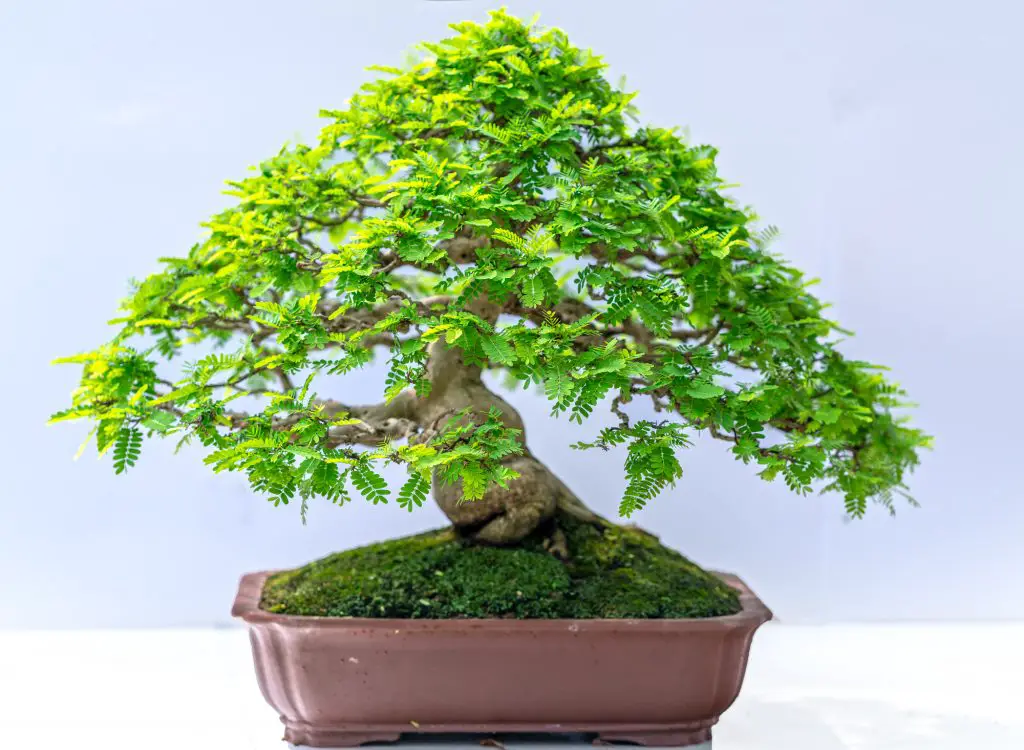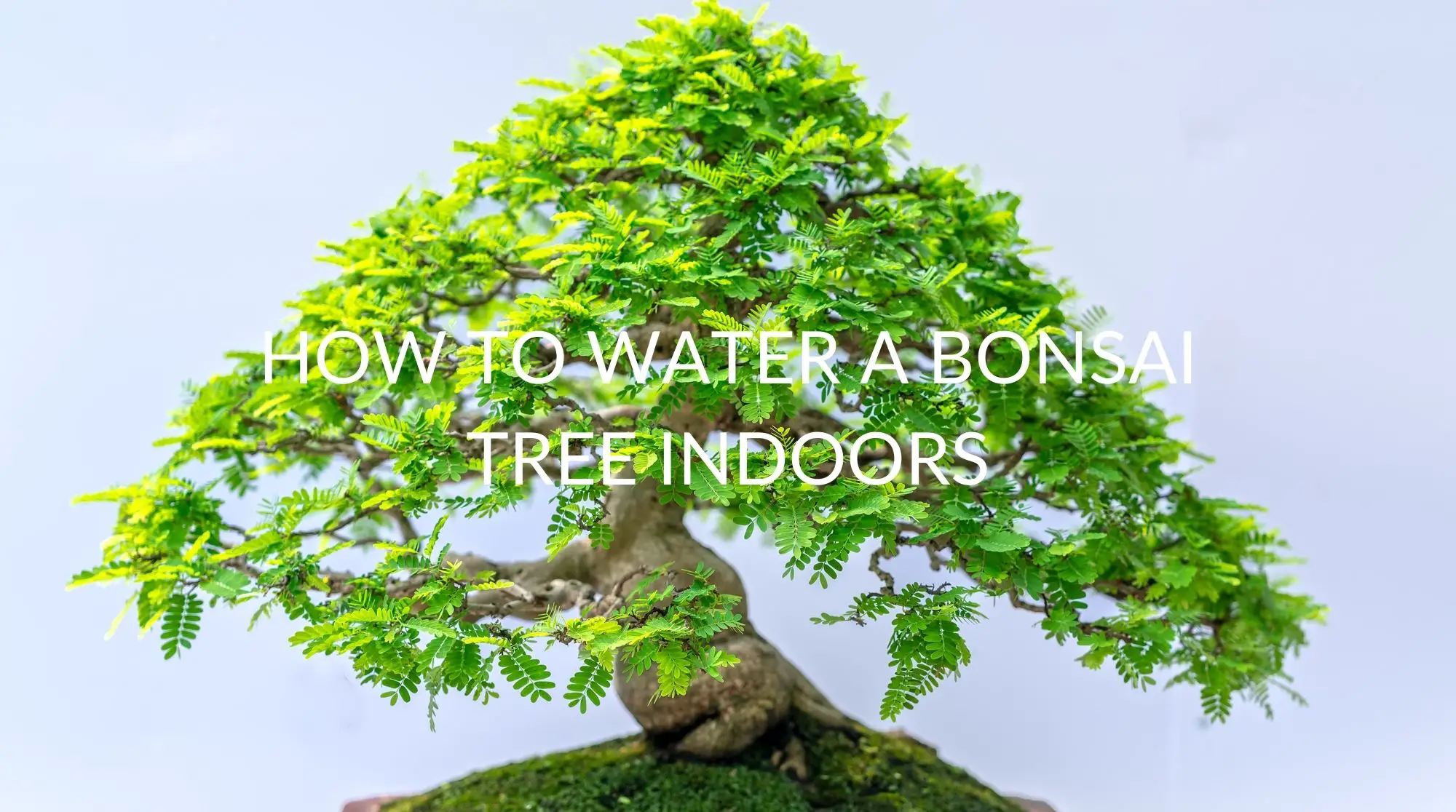Nothing causes the deaths of more indoor Bonsai trees than incorrect watering, and there’s a lot more to it than just keeping the soil wet. If you want your plant to thrive, then you need to know how to water a Bonsai tree indoors.
Some Bonsai trees need more water than others, depending on their location and species, and the water needs of your tree will change throughout the year. Underwatering will cause your Bonsai to wither away, and overwatering can lead to root rot, eventually killing the tree.
This article will tell you everything you need to know about watering your indoor Bonsai, so you can avoid any mistakes that might harm your precious tree. Read ahead to find out how often you should be watering, as well as the different techniques and methods that you can use.
How Often Should You Water a Bonsai?
The first thing that you need to figure out when it comes to watering is frequency. How often do you need to be giving your Bonsai a drink? Unfortunately, there is not a simple one-size-fits-all answer, and a regular watering routine doesn’t usually work. Your tree’s needs will change throughout the year, so you can’t just stick to a schedule.
Some Bonsai species require more water than others, and the size of your tree will affect how much water it needs too. Outdoor Bonsai won’t need as much attention when it comes to watering, as they will be getting more natural hydration from precipitation and the moisture in the air.
How Often Should I Water My Indoor Bonsai Tree?
The type of tree that you have, and its location, will affect how often it needs to be watered. A larger tree in a larger pot will need to be watered more frequently, and high temperatures will dry out the soil more quickly.
The time of year is also crucial. Daily watering might be right for your tree at some points throughout the year, but you can’t rely on it.
For small pots in the summer months, you may need to be watering twice a day, but larger pots in the winter months will need to be watered a lot less. When it comes down to it, you need to be able to tell when your Bonsai needs a drink – you can’t water the same way all year round.

How To Know When Your Bonsai Needs Water
To keep your Bonsai sufficiently hydrated, you have to be able to tell when it needs more water and when it doesn’t. There are a few tricks to keep in mind.
Water When the Soil Is Starting to Dry Out
The best way to make sure you are watering your indoor Bonsai with the right frequency is to keep an eye on the level of moisture in the soil. When you water your Bonsai, the soil should be soaked, and you need to wait for it to dry out sufficiently before you water again.
Feel The Soil
When you are watering a Bonsai for the first time, it’s a lot easier to tell when the top later of the soil is getting dry by feeling it. Put a finger gently into the soil to see if it is still soaked or if it is relatively dry. You want to water your Bonsai when the uppermost layer of the soil is starting to dry out.
Look At The Soil
As you get used to checking your Bonsai, you will be able to see whether or not the soil is becoming dry without having to feel it. It won’t be long before you are able to tell your Bonsai is ready for watering from a quick glance.
Pick Up The Pot
Another way to check if your Bonsai needs more soil is to lift up the pot and feel how heavy it is. Try lifting it when the soil is properly soaked through to get a good idea of how heavy it should be, and then you will be able to tell when it’s feeling too light.
Check The Base
Another benefit of picking up the pot is that you will be able to see if there is any water that has collected at the bottom, which is a sign that you are overwatering.
If the pot your Bonsai lives in has large enough drainage holes, you can also check to see if the bottom layer of soil is still moist. You don’t want to let your Bonsai completely dry out, so if the soil at the bottom is dry, then you have waited too long before watering.
Look At The Leaves
Keeping an eye on the leaves of your Bonsai is also an important way to tell whether it is getting enough water. If your Bonsai is starting to wither, and the leaves are becoming dry and crispy, it really needs more water.
How To Water A Bonsai Tree Indoors
When it comes to the actual watering process, you need to make sure that you are getting it right if you want your tree to thrive.
Use a Good Amount of Water
When you are watering, you want to soak the soil all the way through. Bonsai may be small, but they are still trees, and they like a good amount of water.
Add Water Slowly
Be a little patient as you are adding water to the pot, particularly if it drains quickly. You want all of the soil to be thoroughly soaked, not just the top or bottom layer.
Let The Water Soak Through
Don’t just pour some water on the top and walk away – you need to be sure that it has soaked all the way through to the bottom of the pot. Check the drainage holes underneath to see if the soil is moist. You might need to add water in more than one go.
Don’t Let Water Collect At The Bottom
Depending on the drainage and the soil that you’ve got, some water may pass all the way through and come out underneath your tree. This isn’t a problem if the water gets soaked back up again relatively quickly, but you don’t want to leave your Bonsai sitting in water for too long.
If the roots stay in a pool of water for a long time, they can start to rot, which is likely to end up killing your tree.
Don’t Wash The Soil Out Of The Pot
Another problem with adding water too quickly is that it can easily wash the soil away. You don’t want to flush valuable soil out of the drainage holes in your pot.
Best Methods To Water An Indoor Bonsai
There is more than one technique that you can use when you’re watering a Bonsai indoors, and some of them make it easier to achieve the right level of soaking that your tree needs.
Overhead Watering
Most people will rely on a traditional pouring method to water your indoor Bonsai, but you do need to make sure that the water is soaking all the way through the soil. You also need to make sure that the stream is not too powerful, or it can wash away some of the soil.
A measuring jug can be very helpful, as it will allow you to figure out exactly how much water it takes to get the soil properly soaked.
Immersion Method
For quick hydration, you can fully immerse your Bonsai and its pot in water. Fill a large enough container and simply submerge the entire pot inside, then wait for the bubbles to die down before removing it. The more bubbles there are, the drier the soil becomes.
It is not recommended to immerse your Bonsai too often, as it can lead to root rot.
Use Ice Cubes
A less traditional method for watering your Bonsai is to place ice cubes on top of the soil and allow them to melt. If you do want to try using ice, make sure that you don’t let it touch the leaves or stem of your tree.
It can be tricky to get enough water into the soil this way, and it is not a good watering method for cold-sensitive Bonsai, like tropical species.
Misting
You should give your Bonsai a bit of extra moisture through misting, especially if it is a species that needs a humid environment. Misting can be a vital part of keeping your Bonsai healthy, but it isn’t a replacement for actually watering the soil.
Automated Systems
A lot of people like to use an automated system to take the hassle out of watering their plants, but it is not ideal for Bonsai. With an automated system, you need to regularly change the schedule to make sure that you are not overwatering or underwatering your tree as its needs change throughout the year.
FAQ
How To Water A Bonsai Tree Indoors In A Pot
There are two main methods for watering your Bonsai tree in a pot. You can either use traditional overhead watering or the immersion method, where you submerge the entire pot in water for a few minutes.
Recap: How To Water A Bonsai Tree Indoors
To water a Bonsai tree indoors, you need to keep an eye on the soil and its overall health. Bonsai trees don’t thrive on a regular watering schedule because they need different amounts of water at different times of the year.
You want to water your Bonsai thoroughly so that the soil is soaked all the way through, and then water again once the surface of the soil has started to dry out.
You can pour water onto the top of the soil, as long as it is a gentle stream, or you can submerge the pot entirely in water. It is not recommended that you immerse your Bonsai too regularly, though. as it can lead to root rot.







